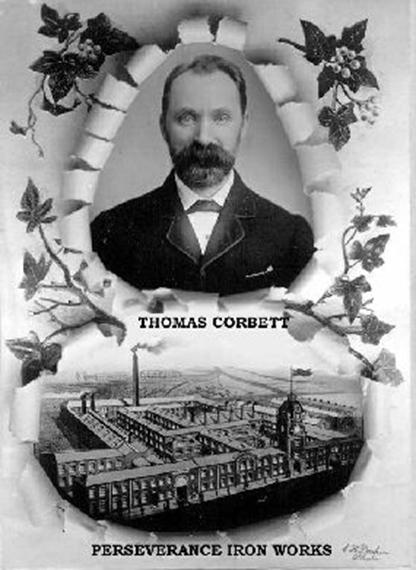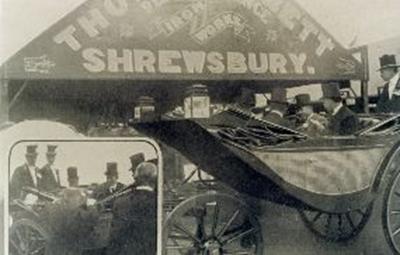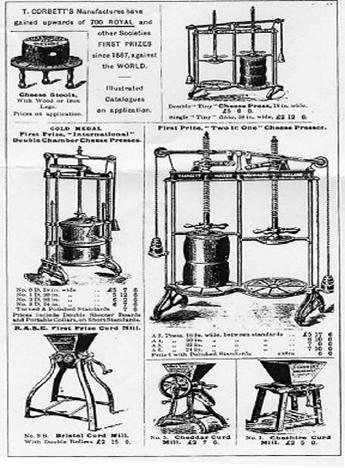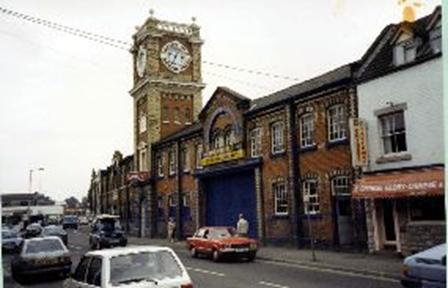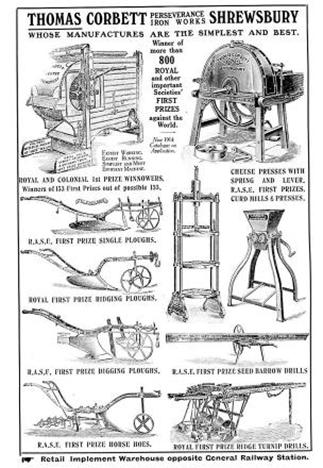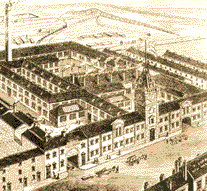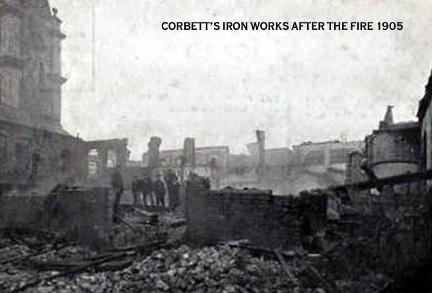|
It is remarkable that the Perseverance Iron Works at Castle Foregate , Shrewsbury survived after being reduced to a shell in a divestating fire in 1905. A huge blaze ripped through the buildings in the early hours of November 20th. The Wellington Journal and Shrewsbury News reported the disaster under the headline "Bad Fire in Shrewsbury" and said that the buildings were considered next to handsome and compact of their kind in the Midlands. The owner was Mr Thomas Corbett - soon to become Mayor of Shrewsbury - who narrowly escaped death as he directed operations at the scene when a wall fell close to where he stood.
A curious feature of the fire was that Mr Corbett had, on every Sunday evening for 25 years except when abroad or out of town, checked the premises, until this Sunday evening when he hadn't because he felt unwell.
Saved from the destruction were priceless patterns."If these patterns had been lost, we should have been blotted out completely" Corbett said.
Total damage of the firm, which made agricultural implements, was estimated at up to £9000 and some parts of the works were saved, including the saw mill and blacksmith shop.
Morris & Co bought the works in March 1929 for £6500 and the premises are today home to Morris Lubricants.
Lightning did strike twice because there was another blaze there on April 30th 1954, in what was described at the time as "Shrewsbury's most dangerous fire ever".
"We manufacturer a wide range of automotive and industrial lubricants and specialist metalworking fluids. We export to over 40 countries worldwide," said chief executive Mr John Alton.
There is no longer a dome on top of the tower. Apparently it was a victim of the 1905 blaze and was never replaced.
There are still a series of dates on the frontage which make clear that the premises were built from left to right of the picture, On the far left just off the picture there is the date 1871. Above the first twinned upper storey windows is the date 1873, and then on the tower itself, and separately a little further along to the right, there is the date 1876. On the opposite side of the road another building in similar style carries the date 1884.
Extract from 'The Industrial Archaeology of Shropshire", by Barrie Trinder
Thomas Corbett (1843 - 1917) was a self-made and self-congratulating entrepreneur. His obituarist recalled that
It was Mr Corbett's privilege to have conversed with half a dozen crowned heads and to receive from them warm congratulations on the services he had rendered to civilisation by his inventions
He travelled as far a field as Australia and South Africa selling his machines. The son of Samuel Corbett (1820-1865), a Wellington ironmonger and foundryman, Corbett began at the age of 20 to act as agent in Shropshire for reaping machines made by Bernhard Samuelson of Banbury, selling 377 within five years. In 1867 he began to manufacture the Eclipse Winnower In a workshop in Chester Street, and was soon employing nearly forty men. In 1868-69 he purchased a yard in Castle Foregate from Treasures the builders, which was the nucleus of a factory which by 1905 had a street frontage of 76m. and occupied 0.6 ha. From 1872 until 1881 he worked in partnership with Arthur J Peele (1835-1905).
The buildings were designed by Corbett's kinsman, A. B. Deakin and were crowned by a 20m.-high clock tower which incorporated a water tank. Components in 1876 include a 26m. x 8m. erecting shop, a 24m. x 9m. smith's shop with 10 hearths, an 18m. x 6m. packing room, a 15m. x 7m. machine and implement store equipped with a crane and a 16m. x 12m. moulding shop with two cupolas. Machine tools were powered by a 10 h.p. steam engine, and the sawmill complex by a 12 h.p. engine by Marshall of Gainsborough.
The Perseverance Ironworks was gutted by fire in 1905. It was subsequently rebuilt, although the clock tower was never fully restored. Thomas Corbett died in 1917. His executors maintained the business through the 1920s but in 1929 it was closed and the premises were adapted as an oil blending works. The facade on Castle Foregate reflects five phases in the growth of Corbett's enterprise. The oldest and most altered portion is a four-bay, two-storey structure with a wide arched entrance, now blocked, bearing the date 1871, and a still readable inscription 'Speed the Plough' on an entablature above the wagon arch. On the western side are two two-storey buildings flanking the four-storey clock tower, each in red brick with blue and yellow brick dressings, each of ten bays in pairs divided by pilasters, and each with a blocked wagon arch in the central bays. The northerly building is dated 1873, while the clock tower and the southerly building are inscribed 1876 North of the 1871 building is a two storey structure in red brick with blue brick dressings, of five wide bays divided by pilasters with elliptical arcading above the first-floor windows. The ground floor windows are rectangular and divided by miniature cast iron columns inscribed 'Corbett'. On the western side of Castle Foregate is a two-storey building in red brick with blue brick dressings, of ten bays in pairs divided by plain pilasters, dated 1884.
Corbett's products are preserved in several agricultural museums. One 'Eclipse' winnower is displayed in the museum at Welshpool, while another ornaments a shopping mall not far from the Queen Mary at Long Beach, California. (see below)
|
